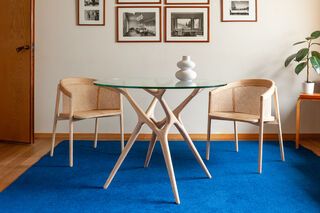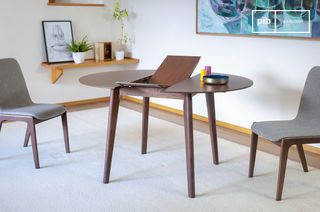Kitchen tables
Kitchen tables fulfil a central utilitarian function, often distinct from that of dining tables. They are used to prepare and eat short meals. Their format depends on the layout: a wall-mounted fold-down model in a narrow kitchen, an island with stools for an open room, or a compact rectangular table for family kitchens. A kitchen table must adapt to frequent use, technical gestures and precise organization of the available space. read more >
Filters
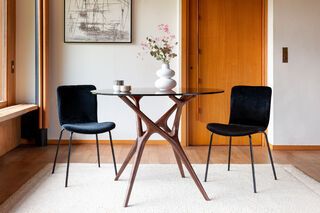
Round glass table with dark solid ash for 4 peopleSylvae
£1025 £920-10%
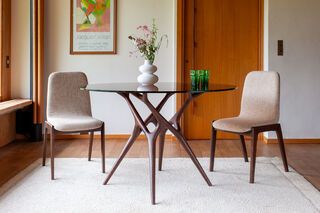
Round glass table with dark solid ash for 6 peopleSylvae
£1195 £1070-10%
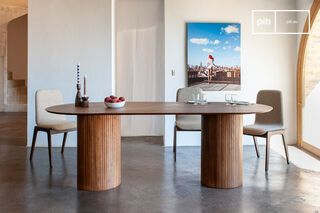
Walnut-tone wood oval table for 8Ligna
£1210 £1090-10%
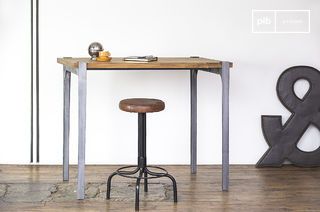
Solid wood high tableWellington
£785 £705-10%
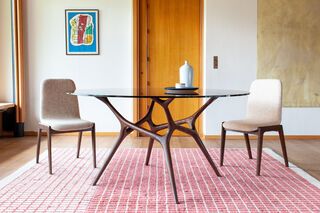
Round glass table with dark solid ash for 8 peopleSylvae
£1560 £1400-10%
10 festive days
10% off our tables and consoles
Welcome your guests in style · Limited stock
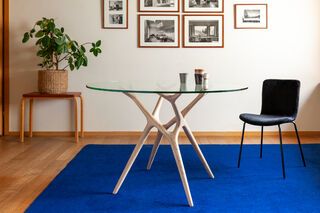
Round glass table with light solid ash for 6 peopleSylvae
£1195 £1070-10%
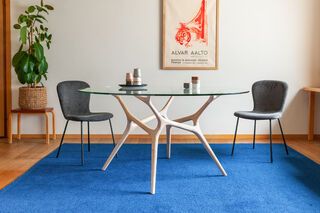
Round glass table with light solid ash for 8 peopleSylvae
£1560 £1400-10%
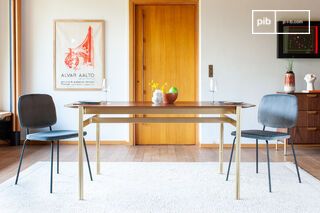
Dark wood dining tableAurora
£1070 £960-10%
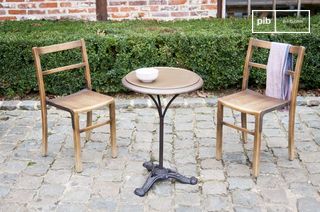
Round bistro table wood and metalVaiana
£480 £430-10%
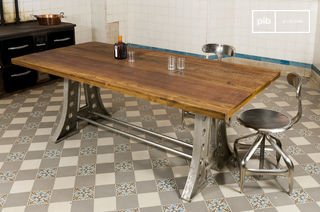
Solid Wood Dining TableNormandie
£1700 £1530-10%
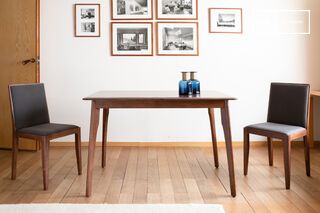
Small dark wood dining tableUmea
£585 £525-10%
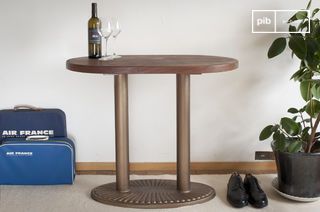
Small oval wooden dining tableWashington
£705 £635-10%
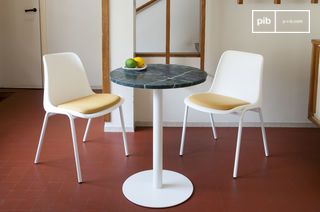
Green marble bistro tableLasby
£510 £455-10%

Specific uses of a kitchen table
A kitchen table has a different role to that of a dining table in a living room. It is located in a space where technical constraints are strong: proximity to cooking zones, need for surface area for preparation, circulation between stations. It is often used for short breakfasts, breaks and simple meals, and must remain accessible even during busy periods.
The table can also be used as an extension to the worktop. In compact kitchens, it completes the preparation surface when fixed tops are insufficient. In more open configurations, it acts as a transitional element between the technical area and the dining area. Its position, height and dimensions must therefore be chosen according to the ergonomics of the space, not just the number of potential guests.
Suitable shapes, formats and materials
The format depends above all on the available surface area. In small kitchens, a fold-down wall-mounted table or a narrow model leaning against a wall can offer a compromise between space-saving and functionality. In larger rooms, a central table allows the kitchen to be organized around a versatile axis. The standard height is close to that of a worktop, between 72 and 90 cm depending on the intended use. Some higher models, known as snack tables, come with high stools and can be used as an open island.
The choice of material is directly linked to the frequency and nature of use. Solid wood is resistant, but can mark if the finish is unsuitable. Laminate offers a smooth, easy-to-clean surface. Painted metal or reinforced plastic are suitable for intensive use or professional kitchens. Glass is seldom used in this context, due to its fragility and high maintenance requirements. It is essential to choose a material that is compatible with conditions of humidity, heat and mechanical wear.
Location, maintenance and circulation
The location of the kitchen table must respect minimum distances to allow fluid circulation. A minimum set-back of 70 cm is recommended for each side intended to receive a seat. If the table is placed centrally, it must not impede access to base units, nor block appliance openings. An L-shaped or parallel layout often optimizes space, by integrating the table into the logic of the work triangle (refrigerator, sink, hob).
Maintenance must be quick and easy. Materials must withstand common cleaning products. The legs must allow a broom or mop to be passed over them without complex handling. The table should not become an obstacle, but a functional support for everyday use. The addition of built-in storage (drawers, low shelves) can be useful if space allows, provided it doesn't create visual overload or clutter up access to seating.
Choosing a kitchen table means thinking about use above all. The furniture must respond to a logic of space, circulation and frequency. It's not just an element of comfort, but a tool integrated into an active room, where ergonomics takes precedence over decorative effect.
